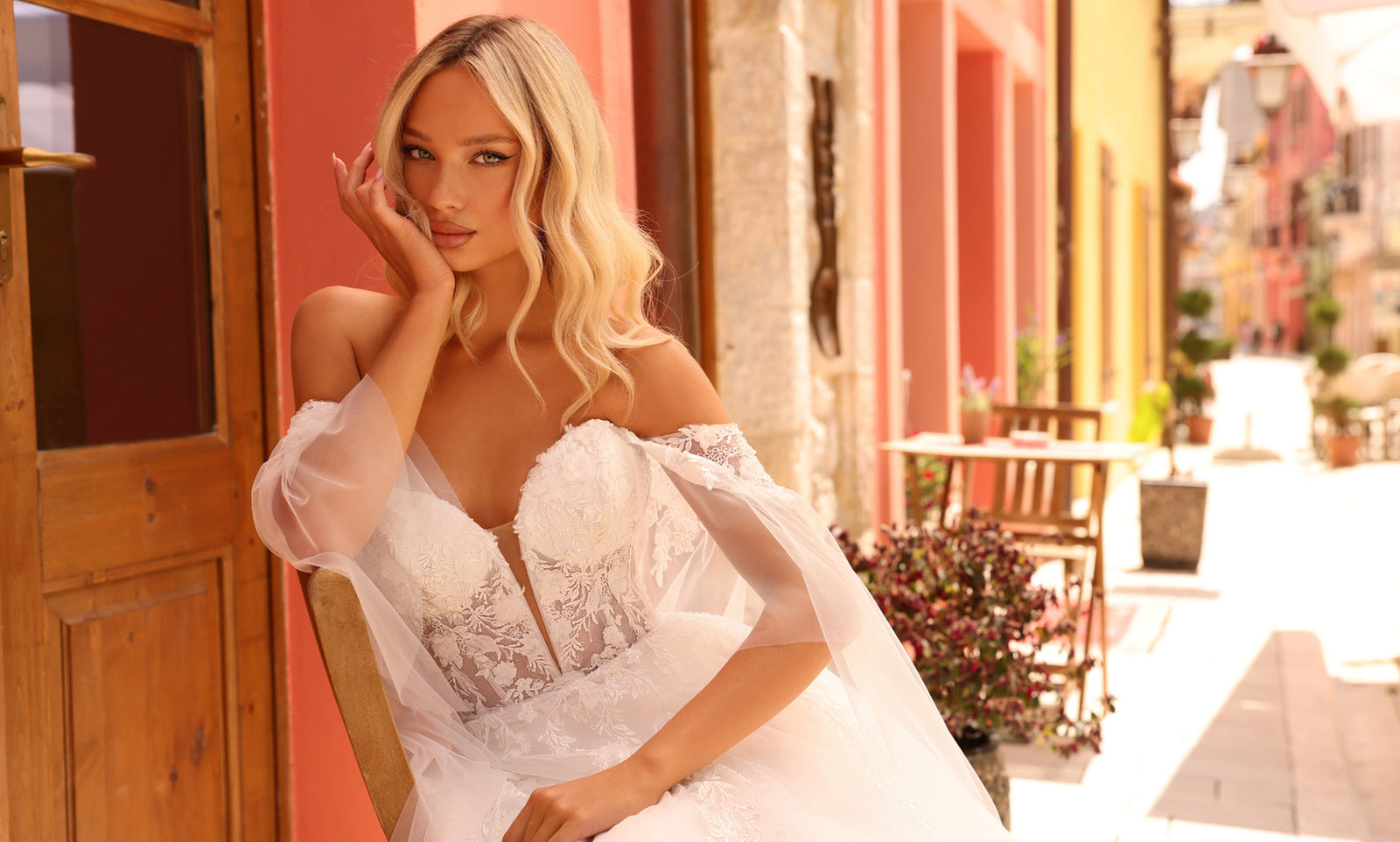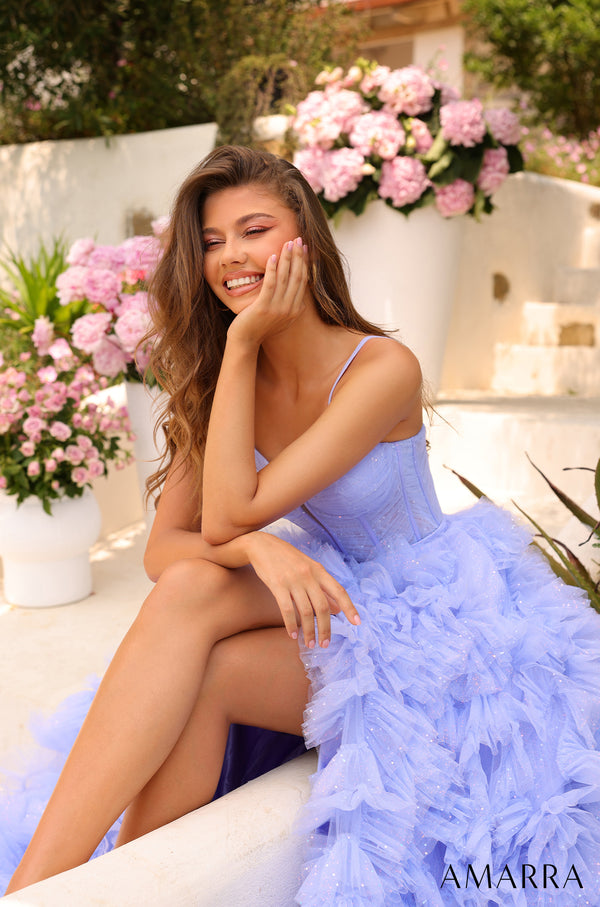Your Cart is Empty



Are you exploring charming wedding traditions to delight your guests? One familiar choice is the garter toss—an exhilarating moment typically occurring towards the end of the reception, where eligible bachelors gather to catch a piece of the bride's lingerie. If you're contemplating whether the wedding garter tradition suits your preferences, continue reading to discover its origins, variations, and potential alternatives!

A bridal garter, traditionally worn beneath the wedding gown, is a lingerie accessory with the historical purpose of keeping stockings in place. In contemporary times, it has evolved into a decorative novelty item primarily used for the customary "garter toss" at weddings.
Today's wedding garters are commonly crafted from lace and adorned with embellishments, secured by elastic. They create a sensual and alluring effect around the mid-thigh area, often employed in bridal boudoir photography. Additionally, these garters are frequently passed down from generation to generation.
While many brides opt for a wedding garter, not all do. For most, the choice to embrace this tradition stems from its sentimental significance in their celebration, its role as a stylish accessory in wedding photos, its potential as a cherished heirloom for generations to come, or its allure as a sensual addition to the wedding night. On the contrary, some brides decide to forgo this tradition.
Several factors contribute to a bride's decision to skip the wedding garter. Some prefer to leave the garter toss tradition out of their reception, while others feel uneasy about wearing one, disliking the aesthetic or style. Frequently, reasons for eschewing the garter toss are linked to its gendered historical context, with some brides deeming it somewhat outdated for their modern celebration.

The wedding garter is accessible to anyone, as no specific individual is designated to purchase it. It can be chosen by the bride to complement her wedding attire, bought as a gift by the future spouse, crafted by bridesmaids as a personalized design, or passed down as an heirloom from the mother or grandmother. Alternatively, a custom garter can be created using the fabric from a family wedding dress.
The cost of a single wedding garter varies widely, ranging from $10 to $150, depending on the brand name, materials used, embellishments, and design intricacy. On average, a romantic lace, silk, or chiffon garter that complements your wedding dress falls within the $20 to $40 price range. For those with sewing skills, creating a custom garter or repurposing a family heirloom can be a cost-effective option, requiring only the expense of materials.
Some brides opt for two wedding garters—one to keep and another for the toss tradition. If this is your preference, it's advisable to allocate an additional budget for the second garter.

It's a matter of personal choice; no specific leg is right or wrong for wearing your garter. Generally, garters are positioned around the mid-thigh to ensure they stay in place. If you choose to wear two garters, they are typically placed on the same leg. Whichever option you choose, inform your partner in advance about the chosen leg and which one to toss!
It's entirely your choice! Particular brides don their wedding garter throughout the day as customary, while others wear it and take it off for various celebration segments. The ideal moments to wear the garter are during your pre-ceremony "getting ready" or "bridal boudoir" photoshoot and later during the reception if you plan to include a garter toss. Between these occasions, some brides stow the garter in their bag or pocket to ensure its safekeeping.

The wedding garter tradition, with roots dating back centuries, has evolved. Initially, the notion was that possessing a fragment of the bride's attire brought good fortune to wedding attendees. In response, newlyweds would present a small token, the garter, to their guests.
The tradition's origin can be traced to the Middle Ages when newlywed couples engaged in a "bedding" ritual to demonstrate the consummation of their marriage. After the ceremony and reception, guests would follow the team to their chamber to witness the bride's somewhat intrusive "deflowering" practice. To create privacy, couples would throw out a piece of the bride's attire to satisfy their curious onlookers.
In contemporary times, the garter toss has transformed into a playful and amusing ritual, typically occurring during a livelier celebration segment. The person catching the tossed garter is humorously designated as the next in line for love and marriage, making it particularly popular among the party's most eligible bachelors and bachelorettes.
Historically, the wedding garter has commonly represented love and fortune. During the Middle Ages, its significance was closely linked to concepts of virginity and marital consummation. However, in contemporary times, it has evolved into a playful and cheerful element of weddings, showcasing the couple's chemistry and providing an opportunity for interaction with guests. Additionally, the wedding garter, often crafted from heirloom materials and passed down as a cherished part of a keepsake wedding dress, can carry symbolic weight regarding family connections and traditions.

Fortunately, the wedding garter now symbolizes love and luck for guests, moving away from its historical connotations related to virginity or intrusive examinations by friends and family. Today, its significance is centered on fashion, enjoyment, sensuality, and maintaining tradition!
In summary, the garter toss is a customary wedding ritual involving removing and tossing the bride's garter to a group of unmarried men. It serves as the groom's counterpart to the bouquet toss, symbolizing good fortune for the single gentlemen present.
In today's world of diverse and imaginative weddings, the garter toss tradition has undergone numerous adaptations and customizations to suit the preferences of nontraditional couples, same-sex couples, and those with distinctive wedding concepts. Towards the conclusion of this article, we've outlined some of these modifications and substitutes for the traditional garter toss!

In a typical bride-groom scenario, it is customary for the groom to remove the garter from the bride's leg and toss it to a gathering of single men. The sequence unfolds as follows:
As for the question of whether wearing a wedding garter is mandatory, the answer is a resounding no. There's no obligation to include a wedding garter if it doesn't align with your style, comfort level, or desired traditions. Feel free to forgo this tradition entirely if you prefer, as no one should impede your choice to shape your celebration in a way that resonates with you.
Couples often skip the garter toss for various reasons, such as being old-fashioned and overly gender-specific, considering it too intimate and potentially embarrassing in a family setting, feeling uncomfortable singling out single individuals in the audience or simply preferring to establish alternative traditions for their celebration. Feel free to omit the garter toss from your wedding festivities if any of these reasons resonate!

And there you have it—the comprehensive rundown of wedding garter tradition alternatives! The decision is entirely yours; you can use the bridal garter for photos only, modify the details, substitute it with another tradition, or skip it altogether. The key is to enjoy the moment and create a special memory with your significant other. While you're here, be sure to explore our extensive array of bridal gowns at AMARRA to complete your wedding preparations. Best wishes!

 Trending Bridal Hairstyles for Short Hair
Trending Bridal Hairstyles for Short Hair  The Ultimate Guide to Planning an Epic Destination Wedding
The Ultimate Guide to Planning an Epic Destination Wedding  Everything You Need to Know About Wedding Dress Fabrics
Everything You Need to Know About Wedding Dress Fabrics  Wedding Dress Hacks: Save Big, Stress Less
Wedding Dress Hacks: Save Big, Stress Less  Happily Ever After: Fairy-Tale Wedding Gowns for Your D-Day!
Happily Ever After: Fairy-Tale Wedding Gowns for Your D-Day!  The Best Wedding Dress Timeline Every Bride Needs
The Best Wedding Dress Timeline Every Bride Needs  8 Signs You’ve Found the Wedding Dress of Your Dreams
8 Signs You’ve Found the Wedding Dress of Your Dreams  Top 10 Stylish Yet Casual Wedding Dresses for Brides
Top 10 Stylish Yet Casual Wedding Dresses for Brides  Crafting Unforgettable Wedding Vows: Vow Tips For Your Special Day
Crafting Unforgettable Wedding Vows: Vow Tips For Your Special Day  70s Bridal Gowns for a Timeless Celebration
70s Bridal Gowns for a Timeless Celebration Join our newsletter and and be the first to hear about all the things we have coming your way.
